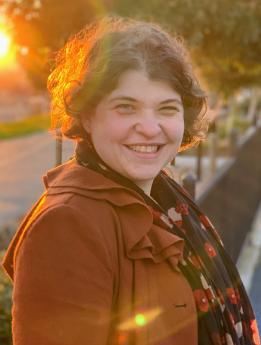Our laboratory is interested in how changes in visual and/or vestibular function affect eye/head coordination, balance, and mobility, particularly in…

Principal Investigator:
Natela ShanidzeGrant Number: K99/R00 EY026994
Grant Period: 2016 to 2018
Source: NEI-NIH
Abstract:
Age-related macular degeneration is the most common cause of vision loss in the central visual field, making central field loss (CFL) a major problem in the world today. Two-thirds of patients with CFL complain of vestibular problems, such as dizziness and instability, leading to a high incidence of potentially fatal accidents and falls. The problem is exacerbated by the patient population’s advanced age, due to the documented decline in vestibular function in senescence. Vestibular deficits in CFL patients are likely due to miscalibrated or non-optimal stabilizing eye movements – many essential oculomotor behaviors are highly reliant on retinal input. Individuals with compromised vestibular responses have difficulties with visual field stability, navigation, and self- and external motion perception. These limitations are particularly true for CFL patients, whose visual acuity is already compromised and for whom the vestibular system becomes the predominant source of motion information. Furthermore, vestibular deficits likely affect patients’ use of head movements to compensate for oculomotor limitations due to eccentric viewing and a patchy visual field. Despite the day-to-day importance of visual and vestibular interaction, these behaviors have not been comprehensively studied in CFL.
This proposal seeks to address this gap. The first aim examines the contribution of head movements to smooth pursuit in CFL patients. This aim extends previous work quantifying smooth pursuit deficits in CFL to a more natural, head-unrestrained condition to determine if head movements are helpful or detrimental in CFL. Understanding the contribution of head movements can guide future rehabilitation strategies and clinical testing in this population. The second aim examines the effect of CFL on the angular vestibuloocular reflex (VOR). The reflex has little foveal dependence and is thus likely to be unaffected in CFL. However, foveal vision is known to contribute to both the calibration of this reflex and to its suppression when the head movement follows target motion. A deficit in any aspect of angular VOR will have consequences on the visual instability and vestibular discomfort of the affected individuals. Understanding these problems would inform necessary treatments in this population. The final aim examines the effects of CFL on translational VOR, a behavior that is completely fovea-dependent and is essential when body movement is present. Determining the degree of its impairment and exact influences of CFL is key to understanding vestibular dysfunction due to this visual deficit. VOR responses will be studied during passive and volitional, active motion. Previous research suggests fundamental differences in the processing of these two types of behavior, which indicates that they might be affected differently by central vision loss. If present, this dichotomy could have implications on how patients are advised and trained to interact with their environment while maintaining an active and productive lifestyle. Active behaviors (including head-free smooth pursuit) will be examined during the mentored portion of this project, while passive vestibular studies make up the bulk of the independent research.
Health Relevance:
Central field loss due to age-related macular degeneration is highly prevalent, debilitating, and can even lead to accidents and injury. The individuals’ decreased visual acuity, inability to correctly make eye movements and a potentially miscalibrated vestibular system make performing daily tasks such as navigating a crowded street very difficult and even dangerous. An improved understanding of the visual and vestibular contributions to patients’ impairment and resultant eye movement strategies can directly lead to improved therapeutic approaches and better diagnostic techniques for this common disability.
Disclaimer:
Research is supported by the National Eye Institute of the National Institutes of Health. The work is solely the responsibility of the PI and does not necessarily represent the official views of the National Institutes of Health.

